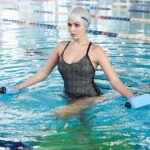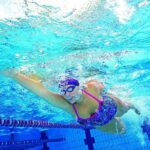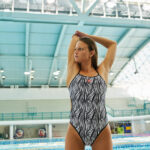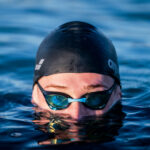What Is Sculling in Swimming, and Why Should You Do It?
Sculling may not be a recognized Olympic stroke, but it can be a serious training tool for swimmers of all levels. Learning sculling techniques can help you to perfect your hand position during your catch, among other advantages. Sculling drills can be a great addition to any swimmer‘s workout, from beginners to competitive triathletes. So, what is sculling in swimming?
In this article, we’ll answer that question. We’ll then look into the advantages of introducing sculling into your swimming drills. Lastly, we’ll share some tips and equipment to help you improve your sculling technique.
What Is Sculling in Swimming?
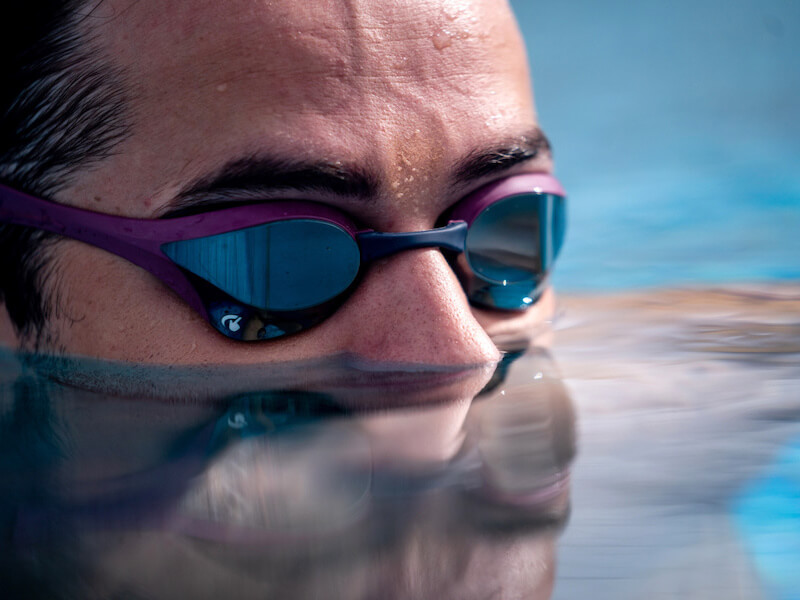
The main component of sculling is simply a figure-eight motion made with your hands in the water. It can be achieved in two main sculling positions: face down or on your back. You can have your elbows at 90 degrees or inline with your body.
Movement should come from the hands as much as possible during the catch scull, your arms remaining mostly stationary. Sculling is usually accompanied by a gentle flutter kick to achieve buoyancy. The flutter kick can also be replaced with a pull buoy for an upper-body-only swim session.
Sculling is not a pool exercise that swimmers compete with. It is a training exercise used by swimmers for a variety of reasons that we will address soon. Sculling is generally a very slow swimming stroke that won’t get your heart pumping like a freestyle would.
Sculling also has applications when treading water between sets. You can scull gently with your hands to keep your upper body balanced.
The Advantages of Adding Sculling to Your Warm-Up
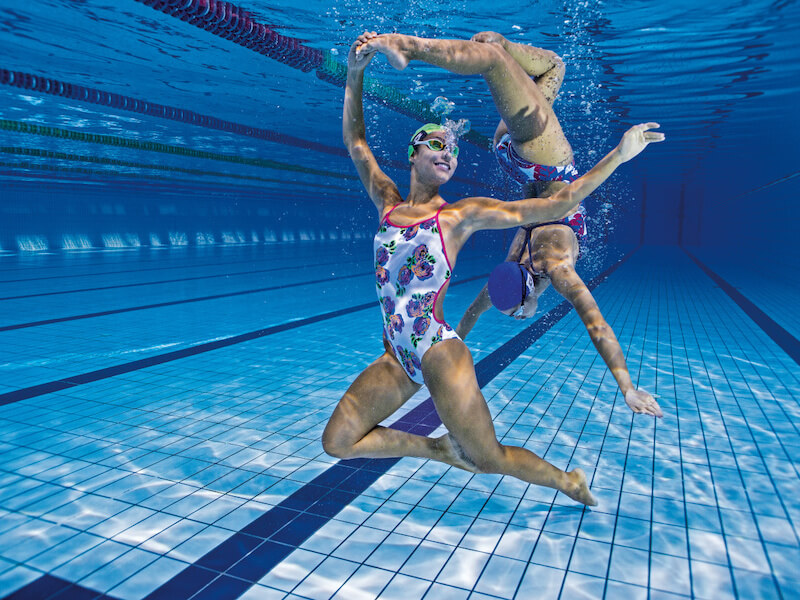
Sculling may be all about slowing things down, but it has some serious advantages that can help with your competitive swimming.
Perfecting Your Catch
Elite swimmers have perfected their catch phase for optimum forward propulsion. Their hands are not moving through the water as such, but their bodies are moving past them as their hands are “anchored” in the water. This is because they have established a solid connection with the water and use the surface area of their hand effectively to create the perfect catch.
During slow and controlled sculling movements, your heart rate is low, and you can give all of your awareness to your hands. You’ll learn when and where to apply pressure, and this will serve you well as you build strength in your hands and wrists that will be ready to use in freestyle and other strokes.
Overcoming Injuries
Injury prevention in swimming is important because an injury will always make training more complicated. Thankfully, swimming is a very low-impact sport, and by modifying your training, you can usually continue to swim through an injury.
For example, if you have a shoulder injury, stick to sculling with your body position completely in line with your hands at your sides. Your shoulders will be in the same position as if you were standing upright, and the water will be supporting them as well.
Encouraging Mindfulness
Even if you don’t use sculling as a technical training tool, it works great as a cool down after a long training session. There’s also a mindfulness aspect to sculling. You’re putting in almost as little work as you can to stay buoyant, and your breathing remains calm as you slowly move through the water. If you concentrate on your breath and the movements of your body, your worries may float away.
Tips for Keeping Your Sculling on Point
It’s highly unlikely you’ll ever be in a position where you’re competing for the fastest time in sculling. But, if you don’t perfect your scull, you won’t be able to reap the benefits it can give you during your competitive swimming.
Remember the Figure Eight
A common mistake people make when sculling is to accidentally mimic a small breaststroke catch circular movement. If you do this, you will end up pulling the water and using your arms as well as your hands, defeating the point of sculling. Just keep the figure-eight movement in mind, and be aware of any movement in your arms to avoid making this mistake.
Take It Easy on the Legs
Sculling is an exercise in control. It’s all about learning what your hands can do for you in the water. If you apply too much force with your flutter kick, your hands won’t be able to get the feel of the water, which will make it difficult to develop your catch. Either slow down your flutter kicks or use a pull buoy to put the power back into your hands.
Pay Attention to Body Position
Sculling is like any other stroke in that it won’t work correctly if your body position is off. When performing a face-down scull, your body position (apart from your arms) should be as it would be during front crawl or breaststroke. When sculling on your back, have your body position the same as you would during backstroke.
Swim Training Tools for Sculling

Sculling can be performed just fine without using any training tools (always use goggles in chlorinated water though), but adding them can enhance the positive aspects that sculling offers. Sculling drills are not designed to make you a faster sculler, so adding a training tool doesn’t carry the negative caveat of becoming a crutch, as it sometimes can with the Olympic strokes.
Snorkels
Swim training snorkels are specifically designed for use by competitive swimmers and feature a design that is catered toward forward propulsion. Using a swim training snorkel, such as the Swim Snorkel III, will really benefit your training when it comes to face-down sculling.
You’ll be able to keep your focus on following the line at the bottom of the pool and not make any interruptions to your body position while you perfect your hand catch. You don’t have to worry about timing your breaths either and can be more cognizant of the water pressure around your palms and fingers.
Pull Buoys
As mentioned earlier, some swimmers put too much force into their flutter kick when sculling, which takes a lot of work away from the hands. This isn’t ideal as the whole point of sculling is to get a better feel for the water by learning how to perfect your catch.
Using a pull buoy means you’ll no longer have to worry about kicking too hard, as your legs can be buoyant and immobile, leaving your hands to do all the work. A pull buoy can also stop your hips from sinking, keeping your body on the surface of the water and helping to reduce drag.
The Pull Kick is a revolutionary pull buoy as it also acts as a kickboard for when you want to turn the tables and make the legs do all the work during other training sessions.
Should You Add Sculling to Your Workouts?

You’ll probably have noticed when reading this article that sculling definitely isn’t about who can reach the end of the pool first. It’s a technical stroke that’s great for people playing the long game; swimmers who like to tweak every aspect of their training until they’re breaking PRs.
Remember that sculling‘s biggest advantage is improving your feel of the water, which can result in a better catch. It’s also great for overcoming injuries or even to support your cool down through mindfulness.
To get the benefits of sculling, you’ll want to use good form. Use a figure-eight motion, keep your flutter kicks light, and ensure that your body is in line.
If you’re interested in adding sculling to your workouts, take the plunge and invest in some swim training tools. Check out the arena online store for all the latest swimwear and training equipment.
Written by:
Thomas Board
Tom is an outdoor and adventure travel writer and full-time firefighter based in Leeds, UK. He spends his free time summiting the mountains of Wales and wild swimming in the lakes of Snowdonia all year round.
